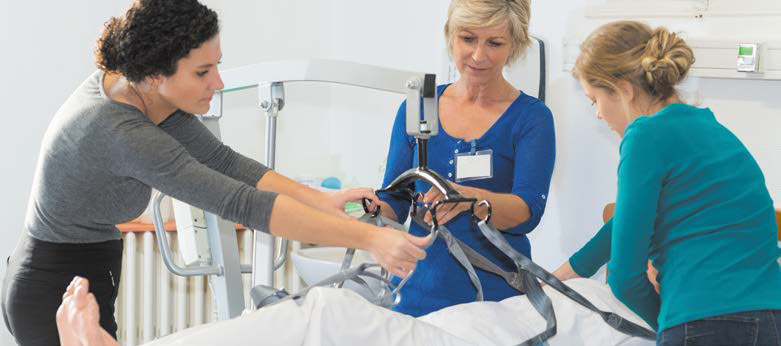Handling the deceased

Manual handling is such an inherent part of working in a funeral home and can cause injury so easily.
Your funeral home could be liable for a claim for industrial injury, with its associated costs and/or enforcement action from the Health and Safety Executive (HSE), if someone hurts their back while doing such activity for you.
Manual handling of large, heavy or cumbersome loads such as coffins poses a significant risk of injury, but what about the ever-increasing weight from the deceased that we need to handle? There are trolleys and other equipment for loads, but what do we do when it’s the middle of the night and the person has passed away in an awkward position or who is classed as obese?
It is now well documented that we have an obesity crisis here in the UK. Someone is obese when their Body Mass Index (BMI) is 30 to 39.9 and you are severely obese if it is 40+. Does that help? Probably not. You will know when you turn up to retrieve a body, whether that person is going to be a problem to move.
How much of a problem is it?
Back pain is an extremely common complaint. An estimated 80% of people in the UK are affected at some time in their lives. It is also one of the main reasons for sickness absence.
On any one day about 1% of the working age population are on sickness absence due to a back problem.
Nearly five million working days are lost through bad backs. On average each person affected took about 20 days off in that period. Most back pain is caused by strains and minor injury rather than serious injury and is often called ‘simple back pain’. Although the pain often comes suddenly and may be triggered by a particular movement, the causes may have been building for some time.
What are the possible hazards associated with undertaking people handling activities?
The key hazard associated with undertaking people handling activities is the move may go wrong. The handler may slip or trip, or they might adopt a poor posture, for instance an awkward twist or overreach. Any of these events could result in a severe muscular-skeletal injury to the person or handler or both. Such an injury could take several months, or even years, to fully recover from. In some extreme cases, a full recovery never occurs.
What can you do?
As an employer, you have a legal duty to reduce or eliminate risk wherever possible but, at the end of the day, the deceased person still needs to be taken away, so you will have to get in there and do something.
Stop and think about the situation first. Make a plan of what you are going to do and consider the following:
- Where are you taking the load? Plan the whole route first. Does it involve stairs, tight corners or uphill sections?
- Is it a long route? Might you need to rest mid-way?
- Are there obstacles that need removing?
- How much help do I need? Can you call for more assistance?
- Is there room for everyone to get into a good posture?
- Can you see what you are doing?
- Is moving the load within your capabilities or do you need to ask for the assistance of the emergency services?
- Do you require specialequipment? Special equipment can include some of the items used in hospitals and care homes such as hoists, slings, slide sheets and lifting cushions.
Just a word of warning. If you do contact the Fire Service to give you some assistance, they will look at charging for the help. Strange though this might sound, this type of work is not an emergency and therefore they are legally allowed to charge. Sometimes they consider this to be a ‘humanitarian act’ and may waive a charge, however this is unlikely if a company calls them. Although it might be a difficult conversation to have with the relatives, it might be the only way to avoid the potential charge.
Types of equipment used in care facilities
I mentioned the use of equipment used to move live patients like they do in hospitals and care homes. They aren’t going to suit every situation, but it may be worth getting some further advice from suppliers.
Tags: Deceased, handling, health, safety, Safety for Business, Simon Bloxham